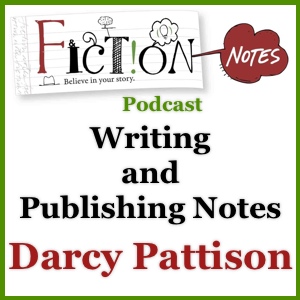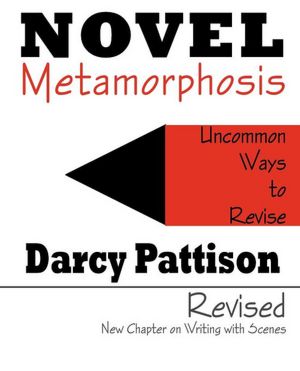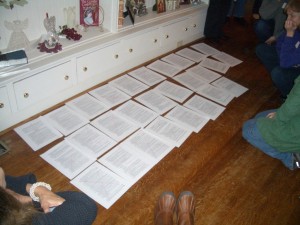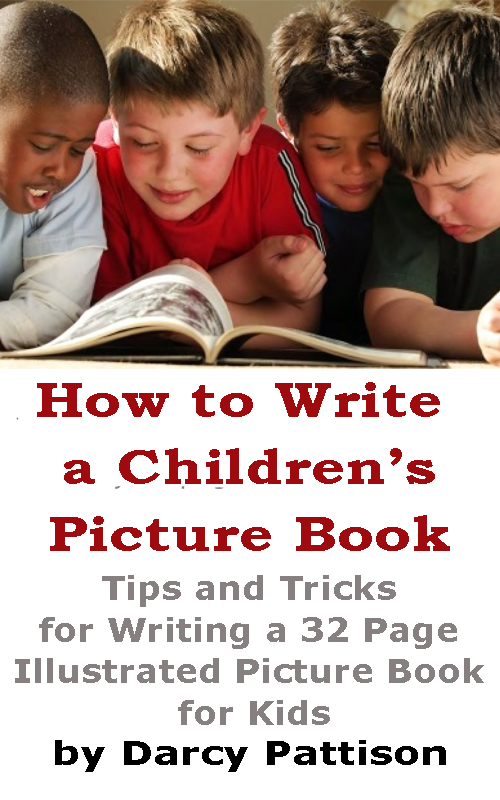new posts in all blogs
Viewing: Blog Posts Tagged with: shrunken manuscript, Most Recent at Top [Help]
Results 1 - 7 of 7
How to use this Page
You are viewing the most recent posts tagged with the words: shrunken manuscript in the JacketFlap blog reader. What is a tag? Think of a tag as a keyword or category label. Tags can both help you find posts on JacketFlap.com as well as provide an easy way for you to "remember" and classify posts for later recall. Try adding a tag yourself by clicking "Add a tag" below a post's header. Scroll down through the list of Recent Posts in the left column and click on a post title that sounds interesting. You can view all posts from a specific blog by clicking the Blog name in the right column, or you can click a 'More Posts from this Blog' link in any individual post.
Follow our Pinterest Boards
You type, “The End.”
Then, you write a fast letter to an editor and send off a couple sample chapters.
Oops!
You forgot one thing. That manuscript needs to cool off before you send it out.
It is the single, hardest thing for me to do. I do not want to wait and besides that, I KNOW the revisions I just did are fantastic and the editor will be dying to read it. Yes? No.
Sadly, I send out material before it is ready. When I wait and read something even a week later, I find so many more things to revise.
Repeated words. Subconsciously, I fall in love with this word or that and it repeated endlessly. I don’t notice this unless the mss has rested a while and then, the words stick out like pimples. My goal is to cut that repetition to a single instance. After all, a single pimple isn’t bad, it’s the allover pimple face that’s bad. Two words I constantly overuse are bit and whirl: She whirled around a bit before settling down. Not bad, until she whirls 13.5 times per chapter.
Spelling and Grammar. OK, all you grammar witches. I know you are out there, because you email me all the time. My blog posts tend to be more off the cuff and I pay for it in humiliation every time a Grammar Witch reports in. (NOTE: I LOVE you, Grammar Witch. I am yours to command. I just WISH I had your eye for detail.) My remedial Grammar Witch glasses only work well when a mss has cooled off a while. Then, things pop out at me.

Darcy, sporting slightly askew Grammar Witch Glasses.
I am much better at spotting pacing problems after something has cooled off. It is the places where I–the author–lose interest and start skimming. Oh, that’s bad when I can’t even keep myself entertained. On the other hand, I often find places to slow down, to zoom in and let the reader feel more emotions. Either way, I need the story to sit a while before I can spot these.
Vague, Unsettled Dissatisfaction. It’s hard to say exactly what this is, because it varies with each manuscript. Just–something is wrong. Off. I can usually pinpoint what that is and fix it. But when I can’t do that immediately, I start analysis, such as the Shrunken Manuscript or using other tools from Novel Metamorphosis. Because I must find and fix whatever it is. Usually–there’s something and it’s not a minor something. I just can’t see it right away.
What about you? Do you let a manuscript cool off?


By:
Darcy Pattison,
on 1/21/2013
Blog:
Darcy Pattison's Revision Notes
(
Login to Add to MyJacketFlap)
JacketFlap tags:
podcast,
fiction,
novel,
character,
Podcasts,
plot,
revise,
shrunken manuscript,
fiction notes,
Add a tag
Welcome to the first Fiction Notes Podcast, where you’ll learn six ways to use the Shrunken Manuscript.
I teach a novel revision retreat; in order to attend, you must have a complete draft of a novel and we spend the weekend talking about how to revise that manuscript. The workbook for that is Novel Metamorphosis: Uncommon Ways to Revise. Traditionally, we only go into depth on the Shrunken Manuscript technique in the retreat, but for the first time publicly, I’m going to explain six ways to use the Shrunken Manuscript. It’s a fitting topic for Fiction Notes’ first Podcast.

ShowNotes for Fiction Notes 001: Shrunken Manuscript
1:45 Instructions on Shrinking a Manuscript
3:32 Seeing your strongest chapters
8:49 Seeing your major plot points
11:49 Seeing your antagonist v. protagonist
14:22 Seeing your character arc
17:17 Seeing your scenes
18:42 Seeing your novel’s pacing
Items Mentioned in this Podcast:
Need more information on revising a manuscript?
Podcast FAQ
How do I listen to the podcast?
You can listen to it by simply clicking on the arrow on the Podcast PlayLink.
You can also download the podcast and play it on your iPod, iPhone, etc.
You can embed the podcast onto other websites. If you do this, please let me know! (darcy at darcypattison dot come).
The podcast will soon be syndicated on iTunes and when it is syndicated, you can use a variety of apps to download and listen to it from a variety of platforms, such as iPod, iPhone, iPad, Android, etc.

.jpeg?picon=2982)
By: Caroline Starr Rose,
on 10/3/2012
Blog:
Caroline by line
(
Login to Add to MyJacketFlap)
JacketFlap tags:
verse novel,
Cheryl Klein,
shrunken manuscript,
novel-in-verse,
book mapping,
visual representation of a story,
quilts,
revision,
Darcy Pattison,
Add a tag
My most recent verse novel manuscript is told in two voices. Without giving too much away, I'll say it's a story of friendship forged in the midst of hostile circumstances. For most of the story the friends, Alis and Kimi, aren't together.
Working with author Darcy Pattison's idea of a shrunken manuscript, editor Cheryl Klein's idea of a book map, and my verse novel as quilt metaphor, I created what you see below.
After finishing my initial draft, I "quilted" the division of voices within the story. You've probably noticed the same thing I have: Alis's voice dominated this draft.
With the second draft, I added more opportunities for Kimi to speak, but it's still pretty heavily dominated by Alis.
With the third draft, Alis is still the voice heard most often, but Kimi's poems have increased, and the blending is better. Notice in the first two drafts I ended with a dual voice poem. I figured as it's a story of friendship, things had to end that way. But now I'm not so sure. I start the manuscript with Alis making her way in the world and end in a similar place. I feel like this is the best way to tell her story and Kimi's, too.
Of course, this is all subject to change. I've taken the story as far as I'm able alone. As my critique partners respond to this draft, I'll be curious what they have to say about this aspect of the story. And I plan to quilt the story in terms of sub-plots before it goes to my agent next month.
Are there any visual techniques you use during revision?
As I've mentioned here before, I'm fascinated by the visual representation of stories. Attending
Darcy Patison's
Revision Retreat in 2009 introduced me to the idea of a
shrunken manuscript -- a condensed printing of an entire book that is then laid out so you might see the story from beginning to end.
The idea isn't to read it in this state (which is single spaced and microscopic) but to get an overall sense of where the story stands.
With the entire manuscript before you, you can determine what's working and what needs work.
There are a limitless number of ways a shrunken manuscript can be used. Grab a few markers, create a key, and use it to determine:
- story strands
- changes in voice for stories told in multiple points of view
- instances of conflict
- the story's movement through dialogue, thought, and action
Darcy's activity nicely paralleled the work I'd just completed before her retreat: the final drafting of May B. As I'd never written a verse novel before (and had only read two before trying!), the idea of a quilt unfolding square by square -- or poem by poem -- was largely what kept me moving forward. I trusted that certain themes and ideas would resurface as I wrote, just as certain patterns emerge as a quilt takes shape.
I've just finished drafting another historical verse novel and have kept this quilt concept in mind. On Wednesday I'll show you how I've used it in revision.
Confession: I know nothing about quilting. It's the metaphor that counts.

By:
Darcy Pattison,
on 2/1/2010
Blog:
Darcy Pattison's Revision Notes
(
Login to Add to MyJacketFlap)
JacketFlap tags:
emotion,
Asides,
novel revision,
shrunken manuscript,
novel,
characters,
plot,
Darcy Pattison,
revise,
Add a tag
Shrunken Manuscript Technique Helps Visualize Problems
Following my directions for shrinking, marking and evaluating a novel, here are some recent examples:

How I Shrunk my Picture Book Manuscript - and Why I’ll Do It Again!
by Lee Wind
At a schmooze of the SCBWI Tri-Regions of Southern California, discussion ranged far and wide, pulling info and tips from many sources. Lee Wind showed a shrunken manuscript of a picture book, complete with glitter, colors and stickers. The report says, “It helped him look at pacing, consistency, internal and external arcs…”
I originally developed the Shrunken Manuscript Technique to help writers see the overall structure of a novel. Here, it shrinks a picture book to a couple pages. I wondered how this is different from using a thumbnail layout, so I asked Lee to explain.
–
Shrink a 530 word picture book manuscript? But it’s already so short!
I wondered if I would actually learn anything at all from the exercise.
I decided to try it anyway, so I could discuss it at the schmooze on revision that I was co-coordinating, having read about the idea, among other places, here at Darcy’s amazing blog!
I made the font size 6pt, changed the margins so all the text would be in a two inch wide column down the left side, and sat down with the printout like an enthusiastic kindergartner with stickers,
highlighters, and glitter dots.
It came out to three pages long. I taped them together, took a ruler and drew a black line where I imagined page breaks.

Shrunken Picture Books, Photo by Rita Crayon Huang
And then I got out the pink highlighter. I drew a square around the
scenes I thought were really GREAT. As you can see, I had three in the beginning, and six at the end, and NOTHING but NOTHING in the middle. (the very bottom was a “key” for myself to explain what all my symbols meant.)
Then I got out these cool pink glitter dots. I put those on scenes
where I got “goosebumps” - scenes that really packed an emotional punch. I had two in the beginning. A big stretch of NOTHING in the middle. And then three scattered at the end.
I was starting to see a pattern.
Then I took out my “tiger” stickers (you know those return address
labels you get for free with nonprofit mailings - the ones with the
photos of wildlife by your name? They’re the perfect size to cut out
and use for this!)
And I put tiger stickers on every scene my antagonist (bad guys)
showed up. There they were, in the beginning and in the end.
I did more stickers, and quickly discovered that the part of my story
that was “working” was actually NOT the part of the story I wanted to emphasize. My “real” main character, in my mind, didn’t even show up in dialog until, um… page 4. See in the photo, that scene that starts off the middle, with absolutely NO pink box, or glitter dot, or tiger sticker? That’s where my “real” main character took center
stage.
Yikes! I was telling the WRONG character’s story.
I also put in stuff about locations, to make sure there were varied
enough possibilities for the illustrator, but really, once I figured out that I needed to re-do the story so it really was the story of my
younger character, I was itching to do a complete re-write.
I think if I had just done a list of my scenes (like an outline) and
worked from that, without shrinking the actual manuscript, I could
have missed this entirely, because my main character - in my mind- was present in the first three scenes, but as an observer. Having the actual manuscript with dialog and everything right there made me
realize she wasn’t really the focus of the beginning of the book, and
that’s a problem I might not have seen so clearly without shrinking
the manuscript.
So, was it useful? Absolutely.
Would I do it again? I’m getting my highlighter and stickers out
right now. Time to shrink the next draft!
Thanks for coming along with me on this virtual shrunken manuscript
journey. And Darcy, thank you for the opportunity to share my
experience with your readers!
Namaste,
Lee
ps- Appreciation to Rita Crayon Huang for the awesome photo of me
holding up my shrunken picture book manuscript at our schmooze on
revision!
Lee Wind is a writer who blogs about Gay Teen Books, Culture and
Politics at “I’m Here. I’m Queer. What the Hell do I Read?“
Post from: Revision Notes
Revise Your Novel!
Copyright 2009. Darcy Pattison. All Rights Reserved.
Related posts:
- More Shrunken Manuscripts
- Shrunken Manuscript v. Spreadsheet Plotting
- Shrunken Mss


By:
Darcy Pattison,
on 3/6/2009
Blog:
Darcy Pattison's Revision Notes
(
Login to Add to MyJacketFlap)
JacketFlap tags:
revision,
retreat,
contracts,
revise,
how to write,
writing career,
write a novel,
negotiate,
shrunken manuscript,
Add a tag

Shrunken Manuscript at Illinois Novel Revision Retreat
Take Time to Revise
Jim Danielson, who attended last weekend’s Illinois retreat, has also posted a picture of a shrunken manuscript.
Here are other links for the Shrunken Manuscript technique:
Intensive feedback, like you get in a weekend retreat, can be overwhelming and after a while, I know I would tend to shut down and just nod and not understand what someone was saying. It’s important to take time later to rethink all the comments you wrote down.
Jim is planning to use the shrunken manuscript to check several issues in his story. Likewise, I know other participants are rereading their manuscripts and hearing the voices of their critique partners in their heads.
Revisions take time: time to give up something you clung to even though it wasn’t working, time to re-envision your story, time to work out the details of the changes needed, time to fall in love with your characters again, time to do the work needed.
Writing is a Business
 I also heard from a participant in last month’s Oklahoma picture book retreat. The last session there was about the career of writing. We discussed the realities of submission, contracts, and the fate of midlist books. I suggested the writers read, The Good Girl’s Guide to Negotiations. (Only two participants were men!)
I also heard from a participant in last month’s Oklahoma picture book retreat. The last session there was about the career of writing. We discussed the realities of submission, contracts, and the fate of midlist books. I suggested the writers read, The Good Girl’s Guide to Negotiations. (Only two participants were men!)
Too many times, I see women writers play tea party in negotiations, to their own detriment.
So - one writer wrote to say that an agent had given her a personal rejection letter. Not the first time this has happened. But it’s the first time the writer immediately sent a second manuscript, which addressed the concerns of the letter in fresh ways.
Yes! Stand up for yourself and your career! No one cares about it as much as you do and if you don’t push for acceptance of your stories, why should anyone else?
















This comment has been removed by the author.
That is a really interesting way to edit a book. I like it. It's visual and analytical at the same time!
How very cool! I've always loved the idea of the verse novel as a quilt. This takes it to a whole new level! Nice job. :D